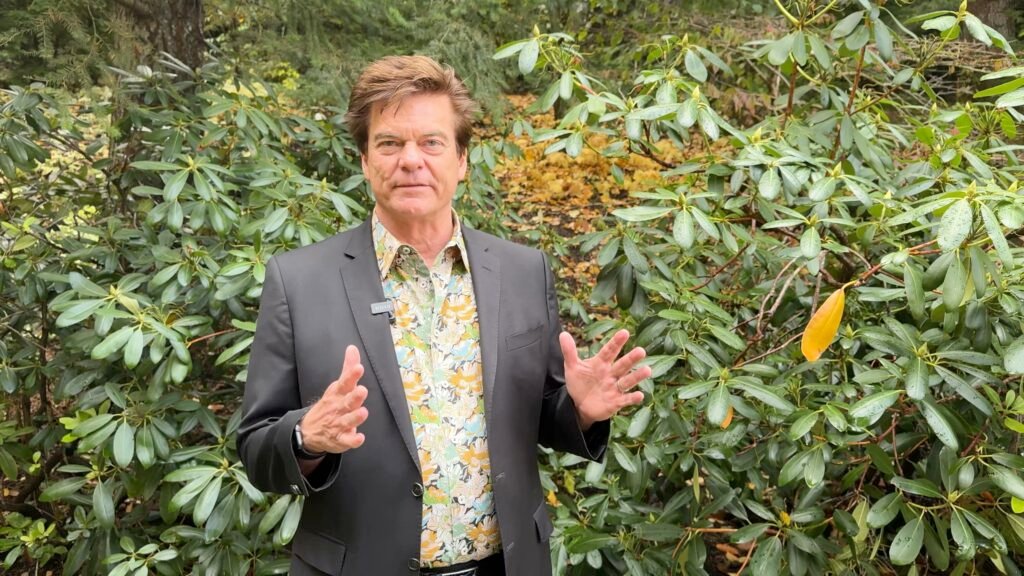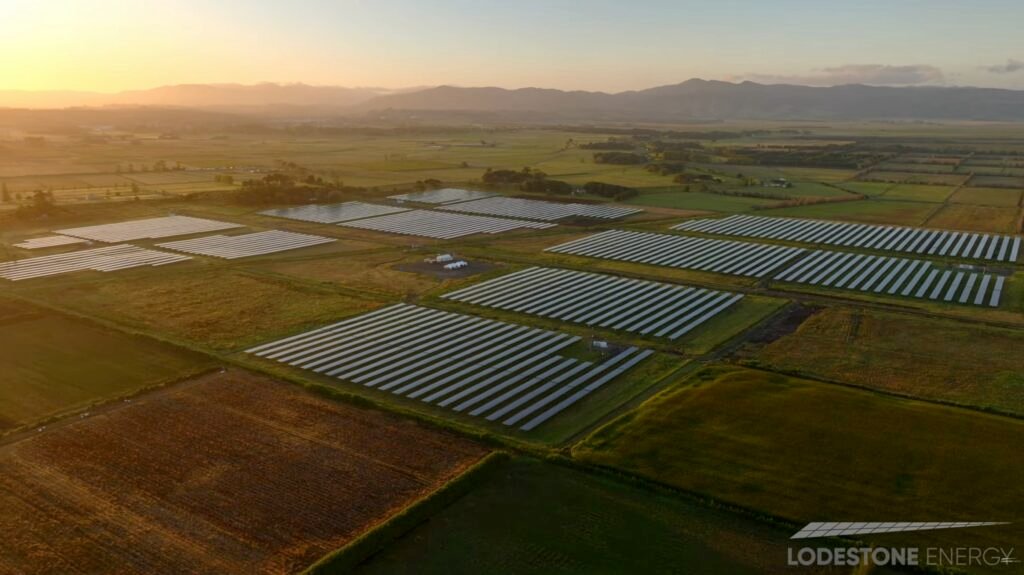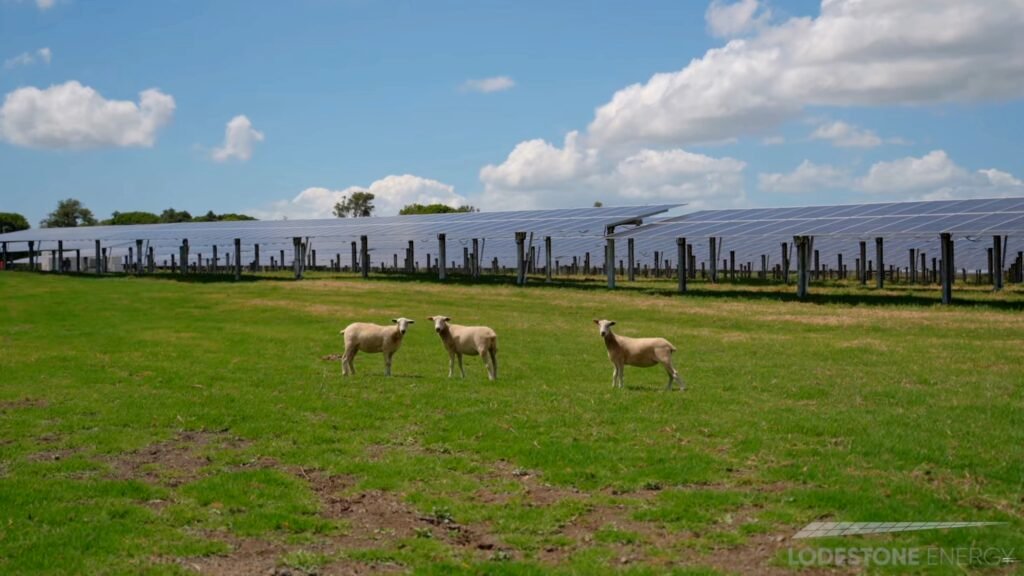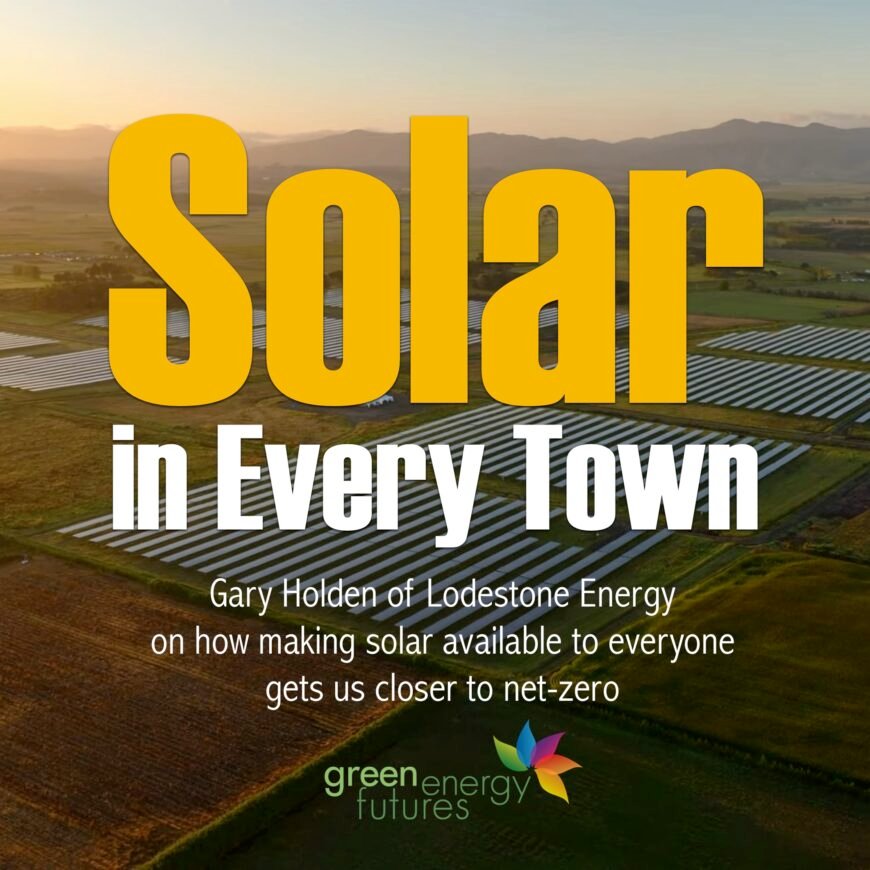By David Dodge, GreenEnergyFutures.ca
The solution to building a 100% renewable, affordable and resilient electricity grid of the future is to build solar in every town. That’s what Gary Holden told the gathered experts at the Decentralised Energy Forum in Whistlers late last year.
“Part of the concept of imagining an electricity grid with solar in every town stems from the fact that solar is now the lowest cost form of energy. Distributing it around the grid can have a positive impact on the cost of future expansions and transmission,” Holden told Green Energy Futures.
Holden is the former CEO of Pulse Energy and TransAlta in New Zealand and he is also the former CEO of ENMAX in Calgary, Alberta.
Solar is cheap and by spreading it around the grid, combined with energy storage it is the cheapest way to get to 100% renewable energy he says. He’s now busy doing this in New Zealand as the managing director of Lodestone Energy.

Solar in every town
“The idea of having a solar farm in every town and maybe three or four hours of storage for that solar farm … is now cheaper than anything else,” says Holden
“Then if you could take it one more step and have the people in that town be able to buy the power from that solar farm so that they can think about buying local.” Then everyone can have solar. Even people with inappropriate roofs, trees or other barriers to installing solar on their own homes.
The idea is to sell solar to electricity consumers, as much as they need to for their homes virtually in long-term contracts that act as if the customer has solar on their own home.
If you suddenly buy an electric car, then you buy a few more solar modules to cover the increased demand.
This is all reconciled by matching your consumption measured by a smart meter to the actual production of the nearby solar farm.
Solar too expensive? Got trees? Bad roof? – No problem
“Sometimes the rooftop is very expensive to prepare for solar, or trees are in the way and the house is facing the wrong direction. Maybe they’re renting the house and building something on the house roof is not even their decision,” says Holden.
Solar is becoming very popular with homeowners who are increasingly building net-zero homes and even with multi-family buildings, but this idea makes solar available to anyone.
“And so, so the idea of virtual rooftop…is the idea that there’s no difference between solar a mile away and a solar on the roof of my house.”
This is not rocket science, but it does require regulations that facilitate the arrangement.
And as luck would have it Holden was in New Zealand in 1994 and helped design deregulation of electricity markets in a way that allows the virtual arrangements to happen.
“One of the key sets of rules we wanted was to have nodal pricing. We clear the spot price in New Zealand in 285 locations.”
“We wanted to send a signal of where the best locations were to bring down the cost of line losses. And so we did that in 1994, and I now use those signals to locate solar farms,” says Holden.

Distributed energy can save on costly upgrades
This is also key since it helps reduce the cost of expanding the grid and reducing big expenditures in infrastructure.
Although he didn’t imagine the present scenario back in 1994, the regulations allow him to sell directly to customers instead of the grid, which also means the potential is not limited by red tape or regulations, only by the demand of consumers.
You can’t do this in most places because regulations don’t allow it.
“I live in New Zealand by choice, because I can see it’s an environment for taking creative ideas, like solar farms in every town works.”
Unlike many places such as his former home in Alberta where the government is now erecting roadblocks for renewable energy, “The rules are friendly and safe for that to happen.”
“And so we’re having an absolute blast building a solar farm every three to six months, and we expect to be able to do that for the next five or ten years,” says Holden.
Holden has set a goal of installing a megawatt of solar every day and he now believes this can be done if a few other companies copy their strategy New Zealand could be on track to be 100% renewable by the mid-2030s.
“Ultimately [solar] is the lowest cost form of energy that that mankind has ever seen,” says Holden.
Solar and hydro-kissing cousins
“New Zealand’s kind of lucky, in a way, because 80% of the energy is hydro and 20% is thermal. So we’re just playing with the 20% bit,” he says. “And so in six or seven years, we could imagine a 100% renewable grid.”
Ironically, this is also roughly the ratio of hydroelectricity in Canada.
“We’ve got the BC hydro resources and the Manitoba, Ontario and Quebec hydro resources. And so … if New Zealand’s a metaphor for Canada, then you’ve just got to figure out how do you get the hydro to spread into the places where thermal is and then build on that solar farm in every town idea,” says Holden.
Canada’s hydro is concentrated in a few provinces, but the solution says Holden is to interconnect the hydro provinces with the ones still using fossil fuels, add renewable energy and storage and then it’s possible for Canada to do the same.
The Canadian province of Alberta has among the best solar and wind power potential in Canada and the industry was booming until the fossil fuel-loving government slammed the brakes on the industry with rolls of red tape.
“If I was to wish something positive for Canada it would be for disruption to be safe,” says Holden. He pines for the day when “It’s okay to have an idea like what I just shared with you, drop it in Alberta and not have any backlash.”

“We are on the precipice of creating residential virtual solar contracts”
As for Lodestone, they have two solar projects generating electricity, two under construction and three more in the planning stages.
For now, Lodestone is mostly selling its solar electricity to businesses who want affordable electricity and to eliminate their emissions.
Holden calls this idea of selling solar directly and virtually to consumers as the future of solar and a key to achieving his bold goals.
“We are on the precipice of creating residential virtual solar contracts. That’s for life. You can have it for life. You can take it with you. You can share it with your children if you want.”
“We are planning on gearing ourselves up to put in a megawatt day. That’s a million and a half dollars spent every single day to go solar,” says Holden.
And consumers are awakening to this new reality of cheap energy. Purchasing solar energy to fuel their electric vehicles is up to five times cheaper than buying gas for an internal combustion vehicle and gas is only going up.
Market forces, the goal of reaching net-zero and the low cost of solar with energy storage might just fuel this revolution faster than we think. Gary Holden certainly hopes so.
Green Energy Futures CKUA.com Podcast – Subscribe today!

